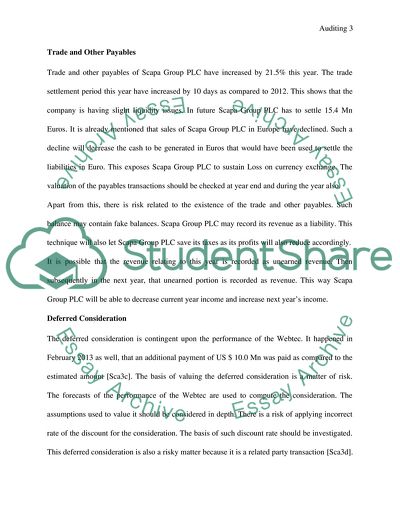Cite this document
(Auditing case study about Scapa Group Plc Example | Topics and Well Written Essays - 1750 words, n.d.)
Auditing case study about Scapa Group Plc Example | Topics and Well Written Essays - 1750 words. https://studentshare.org/finance-accounting/1815993-auditing-case-study-about-scapa-group-plc
Auditing case study about Scapa Group Plc Example | Topics and Well Written Essays - 1750 words. https://studentshare.org/finance-accounting/1815993-auditing-case-study-about-scapa-group-plc
(Auditing Case Study about Scapa Group Plc Example | Topics and Well Written Essays - 1750 Words)
Auditing Case Study about Scapa Group Plc Example | Topics and Well Written Essays - 1750 Words. https://studentshare.org/finance-accounting/1815993-auditing-case-study-about-scapa-group-plc.
Auditing Case Study about Scapa Group Plc Example | Topics and Well Written Essays - 1750 Words. https://studentshare.org/finance-accounting/1815993-auditing-case-study-about-scapa-group-plc.
“Auditing Case Study about Scapa Group Plc Example | Topics and Well Written Essays - 1750 Words”. https://studentshare.org/finance-accounting/1815993-auditing-case-study-about-scapa-group-plc.


